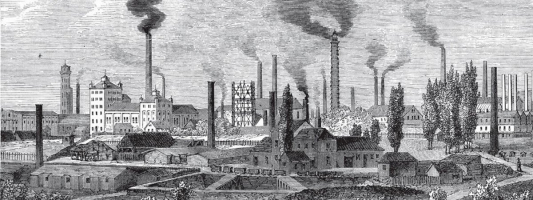Top 5 Fast Facts about the Cell Membrane
The cell membrane is a biological membrane that separates and protects all cells' interiors from the outside world. The cell membrane is a lipid bilayer ... read more...composed of two layers of phospholipids with cholesterols interspersed between them, which maintains proper membrane fluidity at different temperatures. Membranes also contain membrane proteins, which include integral proteins that cross the membrane and operate as membrane transporters, as well as peripheral proteins that adhere loosely to the cell membrane and act as enzymes to promote contact with the cell's environment. Now, let's discover the facts about the cell membrane that you should know.
-
It is composed of a double layer of phospholipids that serves as a barrier between the cell and the outside environment. The primary function of the cell membrane is to act as a barrier between the cell (which may also be a single-celled creature) and the outside environment; hence, the cell must have a structure that permits it to interact with both. The membrane of a cell is mostly composed of a double layer of phospholipids (fatlike, phosphorus-containing substances).
Each layer is made up of phospholipid molecules with a hydrophilic (water-loving) head and a hydrophobic (water-repelling) tail. The heads of those in the outermost layer face and interact with the watery external environment, whilst those in the interior layer point inward and interact with the watery cytoplasm of the cell. The area between the two layers is fluid repellent, which isolates the cell's interior from the outside environment. The cell membrane is semipermeable, allowing some chemicals to enter and exit the cell.
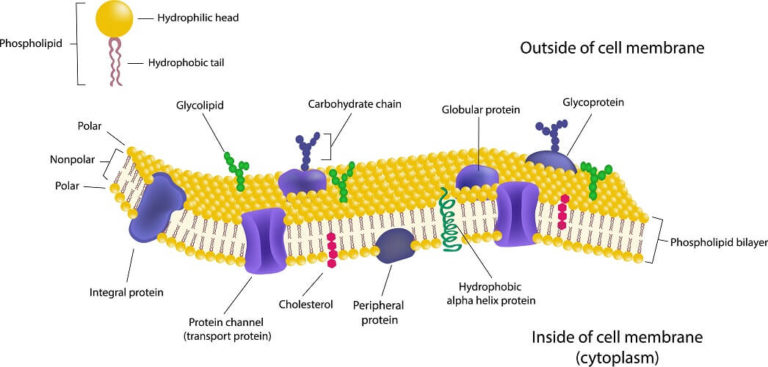
biologydictionary.net 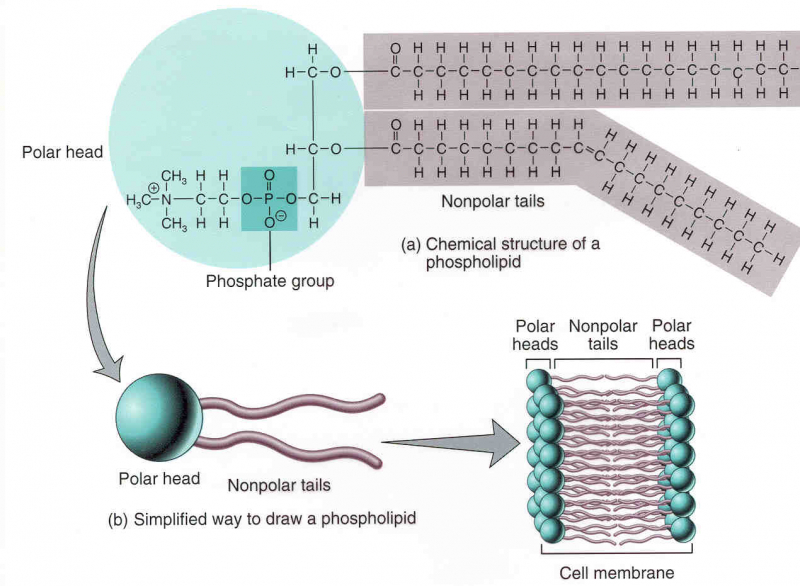
ibiologia.com -
Because optimal cell activity is dependent on the transport of nutrients and useful materials into the cell as well as the removal of waste products from the cell, the cell membrane contains proteins and other molecules that execute a number of these functions. Some proteins are attached to these phospholipid mats to help move nutrients (such as oxygen and water) and wastes (such as carbon dioxide); others help the cell connect with and attach to the right kinds of materials (as well as other cells); and still others keep the cell from connecting with toxic materials and the wrong kinds of cells, foreign or otherwise.
Enzymes are specialized proteins that help break down bigger nutrients or mix multiple nutrients into more usable forms. Protein molecules may be linked to the surface of one of the cell membrane's layers, or they may be totally entrenched within the layer dwelling alongside the phospholipids, depending on their design and function. Some proteins that funnel nutrients into and out of the gap between the inner and outer layers of the cell membrane traverse just one of the phospholipid layers. Others are large enough to span both and are designed to transfer nutrients into the cell or funnel wastes away from the cell. Proteins also assist the cell in maintaining its form.
Furthermore, cell membranes participate in a variety of cellular processes such as cell adhesion, ion conductivity, and cell signaling, as well as serving as the attachment surface for several extracellular structures such as the cell wall and the glycocalyx, as well as the intracellular network of protein fibers known as the cytoskeleton. Cell membranes can be artificially rebuilt in the field of synthetic biology.
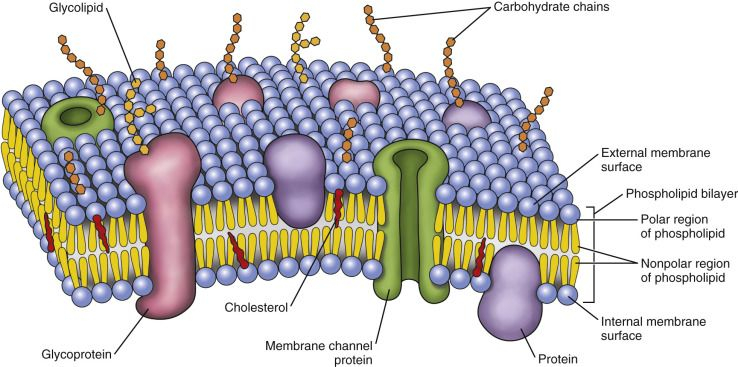
Pinterest 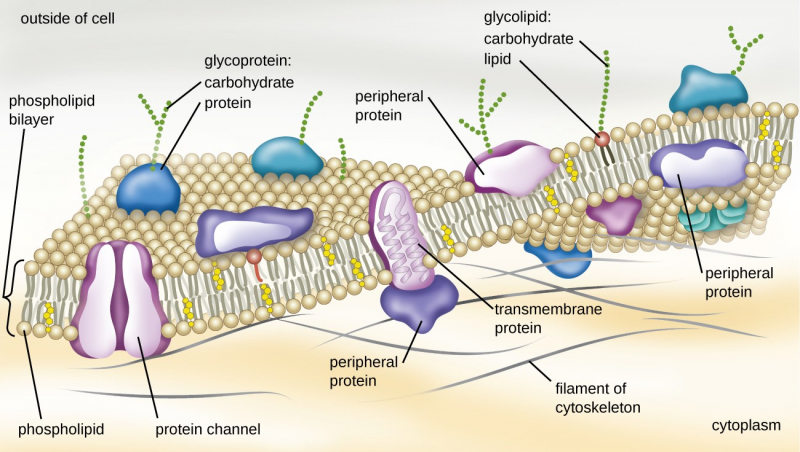
Lumen Learning -
Carbohydrates, which are carbon, hydrogen, and oxygen molecules (such as sugars, starches, and celluloses), are present on the surface of the cell membrane's outermost layer. Carbohydrates join with lipids to produce glycolipids, while proteins link with carbohydrates to make glycoproteins. Depending on how they are designed, glycolipid and glycoprotein molecules can operate as chemical markers or receptors to help identify the cell or connect it to other cells. Glycoproteins may connect with other proteins to form enzymes and other compounds that, depending on the molecule's function, may be engaged in blood clotting, trapping invading microorganisms, disease protection, and other functions.
Plasma membranes include carbohydrates as well, primarily glycoproteins but also some glycolipids (cerebrosides and gangliosides). Carbohydrates play a vital part in cell-cell recognition in eukaryotes; they are found on the cell's surface where they detect host cells and communicate information; viruses that attach to these receptors induce infection. Generally, glycosylation does not occur on membranes within the cell; rather, glycosylation happens on the extracellular surface of the plasma membrane.
The glycocalyx is an essential component of all cells, particularly epithelia containing microvilli. Recent evidence suggests that the glycocalyx has a role in cell adhesion, lymphocyte homing, and other processes. The penultimate sugar is galactose and the terminal sugar is sialic acid, as the sugar backbone is modified in the Golgi apparatus. Sialic acid carries a negative charge, providing an external barrier to charged particles.
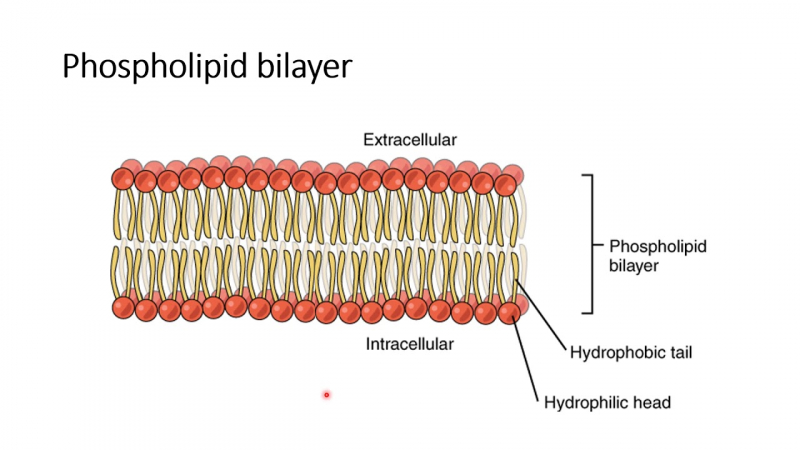
https://www.youtube.com/watch?v=Q6BCkf7X3Hg https://www.youtube.com/watch?v=Q6BCkf7X3Hg -
It might be difficult to visualize how the cell membrane works. After all, the cell, cell membrane, and all of the cell's functions take place at levels too tiny for the naked eye to observe. S.J. Singer and G.L. Nicolson, two American scientists, devised the fluid mosaic model in 1972 to describe the structure and functions of the cell membrane. According to the model, the membrane is fluid in the sense that it is continually changing. Individual phospholipids travel laterally (in the same layer); nevertheless, one or more lipids may sometimes flip to the other layer.
Because lipids are pulled to one another by weak hydrophobic interactions, the bonds that they form are frequently broken. The proteins in the membrane, as well as cholesterols, move about in this sea of lipids (which occur only in animal cells). Cholesterols make the membrane less soluble, increasing its stiffness and hardness at moderate and higher temperatures. However, at lower temperatures, cholesterols separate phospholipids from one another, preventing the membrane from becoming excessively stiff.
For years, scientists differed over the importance of the structure they saw as the cell membrane. For over two centuries, membranes were seen but largely ignored as a significant component with biological function. It wasn't until the twentieth century that the importance of the cell membrane was recognized. Finally, Gorter and Grendel (1925) discovered that the membrane is "lipid-based". They expanded on the concept that this structure would have to be in a layer-like configuration.
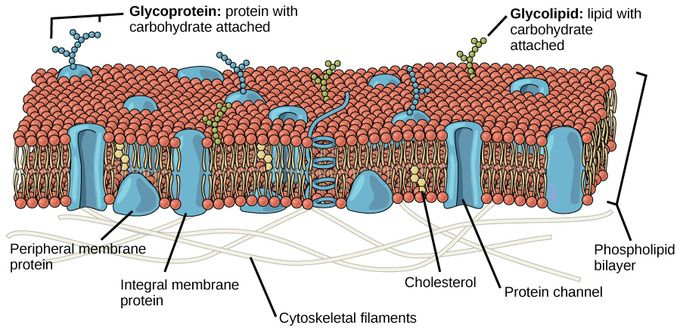
Pinterest 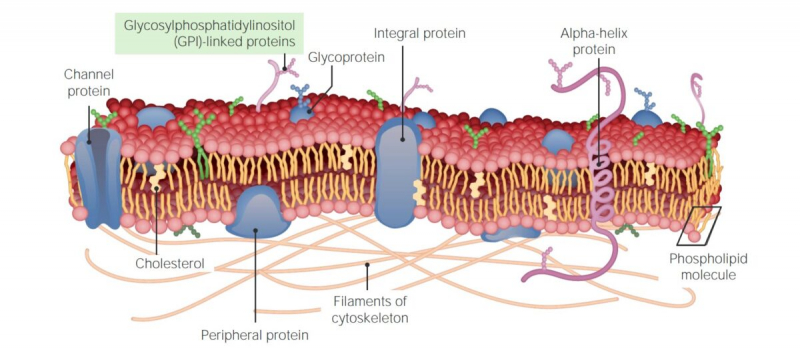
lecturio.com -
To transfer molecules across the cell membrane, nutrient and waste transport can be passive (no energy required) or active (energy required). Passive transport can occur via diffusion, in which molecules migrate from a high concentration region to a low concentration region (down a concentration gradient). Osmosis occurs when molecules diffuse across a semipermeable membrane. However, in cells, facilitated diffusion works because of transport proteins, which establish membrane-spanning portals for certain types of molecules and ions or latch to a specific molecule on one side of the membrane, convey it to the other side, and release it.
Active transport, on the other hand, is powered by adenosine triphosphate (ATP), a coenzyme that transports chemical energy collected from food breakdown to other areas of the cell, to move molecules across a concentration gradient. Active transport, for example, permits the cell to evacuate waste ions such as sodium (Na+) even when the concentration of sodium ions outside the cell is larger than the concentration within.
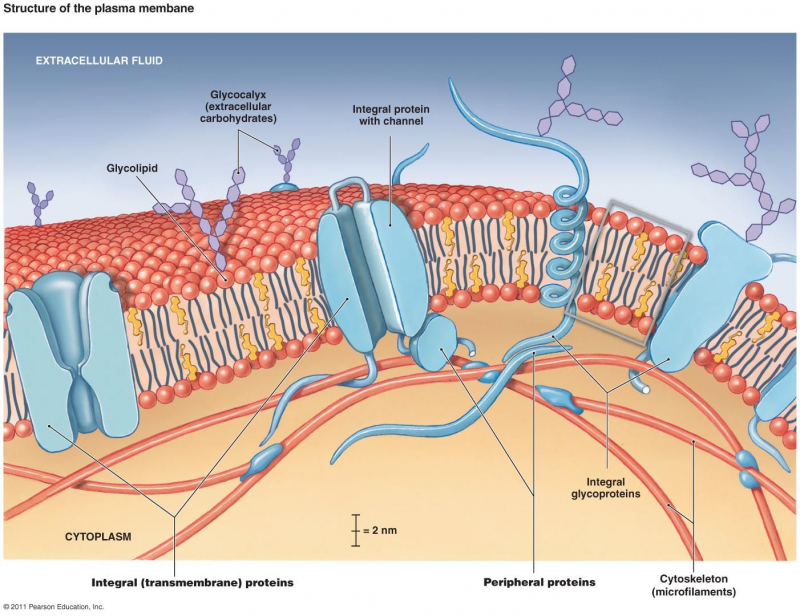
animalsname.neocities.org| 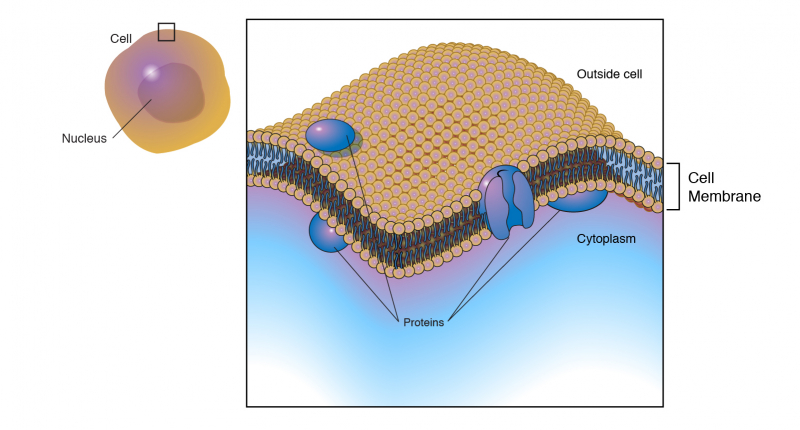
Genome.gov | National Human Genome Research Institute







